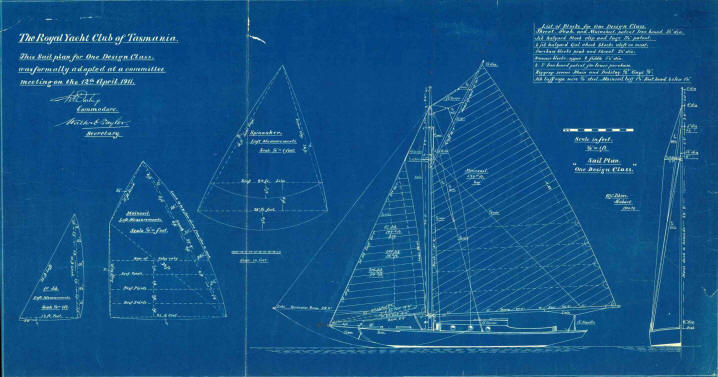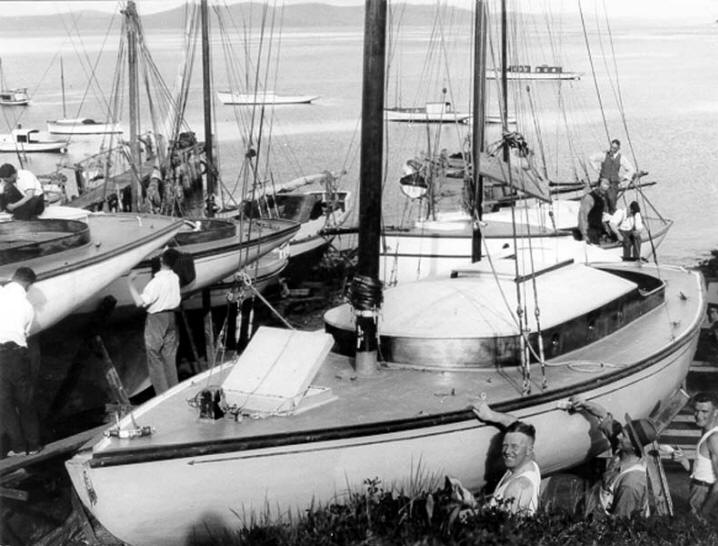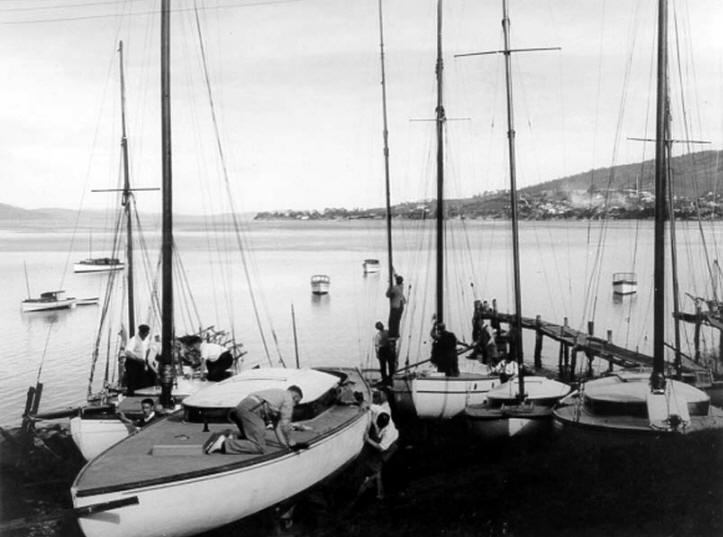In 1899 (Hobart Mercury Saturday 18 November 1899) E. H. Webster, a prominent member of the Derwent Sailing Club (later to become the Royal yacht Club of Tasmania (RYCT), presented plans, drafted by Hobart naval architect Alf Blore, for a “one-design” class for the club. His yacht “Caprice” was to these plans but he could not convince any other members to join in. He tried again later with the Logan (Auckland) designed and built Erica, again with no success.
Webster later commissioned Alf Blore to modify a design by William Hand Jr, published in “The Rudder” in February 1900, of a “Knockabout”, 21 ft on the waterline. Blore modified the design to suit local boatbuilding methods and sailing conditions. “Elf” was built in Pirates Bay in 1907 by William Ball, although not strictly to the Blore design, but Webster still could not find any other takers.
By 1910, however, Webster finally persuaded several yachtsman to build identical yachts to another of Blore’s modifications of Hand’s design. These yachts, built for the sum of about £200, became known simply as “One-Designers“.
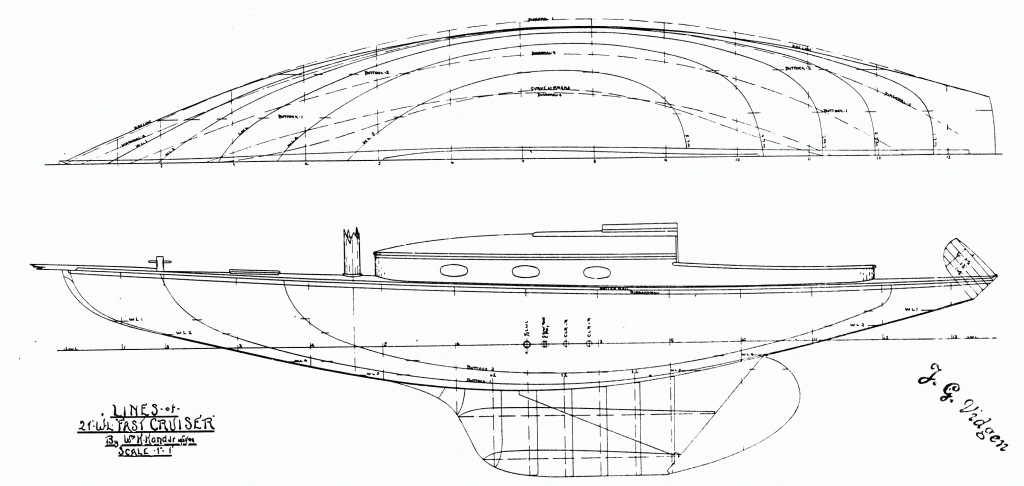
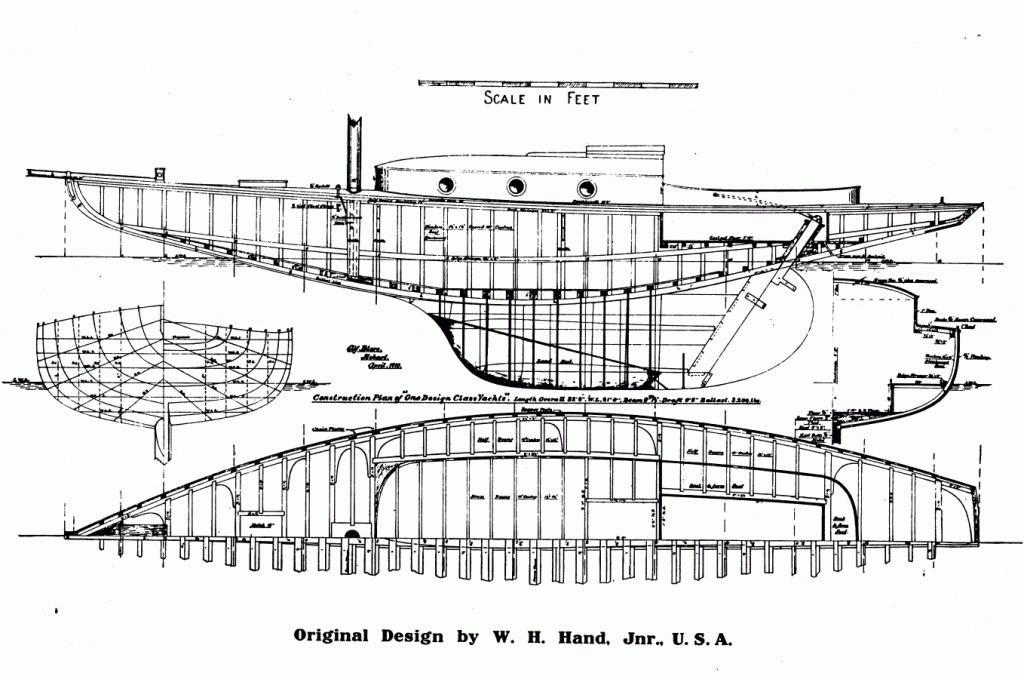
The earliest of the One-Designers were built by Charles Lucas at Battery Point, Hobart. The first, Spindrift (1) (later renamed Weene) built for E.H. Webster, was launched on 17 October 1910. She was followed a fortnight later by Pandora (2) for D. Barclay Jr.
In February 1911 Curlew (3) for Messrs Tarleton, Douglas and Knight was launched, followed by Vanity (4) for Messrs Darling, Crisp and Ireland and a slightly modified version – Gannet – was build for a Victorian client in November. Around the same time, Pilgrim (5) was completed by E. A. Jack in Launceston for Richmond Tinning. The last One Designer was Canobie (6) launched by Lucas in November 1912, just in time to win the beauty contest at the opening regatta.
In 1913, the first 5 yachts in the 100-mile Ocean Race around Bruny Island were One Designers (Pandora, Vanity, Curlew, Pilgrim and Weene) all finishing within 35 seconds of each other.
In 1914 Curlew was bought by Andrew Wilson and taken to Sydney to establish the One Design class at RPAYC. Six yachtsmen placed orders but plans were interrupted by WW1, and the class was never established. WWI also stopped the expansion of the class in Tasmania and it was not expanded after the war.
In later years, Blore further modified Hand’s design, lengthening it to 37 ft over all, 22 ft waterline, and few were built as A-Class yacht in the RYCT, including Grayling (1922 by TGW Neave, Battery Point) and Alwyn.
The One-Designers went on to dominate racing on the Derwent until the 1920s. Eventually outclassed by the later and larger “A-Class” yachts in the 1920s and ’30s, and too large for the “B-Class”, Vanity and Weene were simply cut in half and lengthened to once again lead the fleet. Pandora had her foredeck raised and Curlew had her topsides raised by two planks. Canobie and Gannet’s hulls remain in more or less original condition, with Canobie reverting to gaff rig in recent years.
One Design Overseas
New Zealand
According to Robin Elliot of Auckland, two One-Designers (known in NZ, not surprisingly, as Tasmanian One-Designers) were built in New Zealand:
- Pacific was built by T. Le Huquet in 1914 for Frank Rule, a Tasmanian. It was hoped that more would be built but WW1 put a stop to that. Pacific was wrecked in a gale February 1918.
- Vanitie was built in 1922 by Joe Slattery for the Morris brothers. She had a very successful racing career and won the Tauranga Gold Cup for the Auckland-Tauranga race in 1925. At some stage in the 1960s she was burnt out but was repaired with poor quality timber. By 1983 the dry-rot was so extensive she was stripped of her fittings and cut up.
India
Varuna, was built in Bombay, India some time prior to 1916.

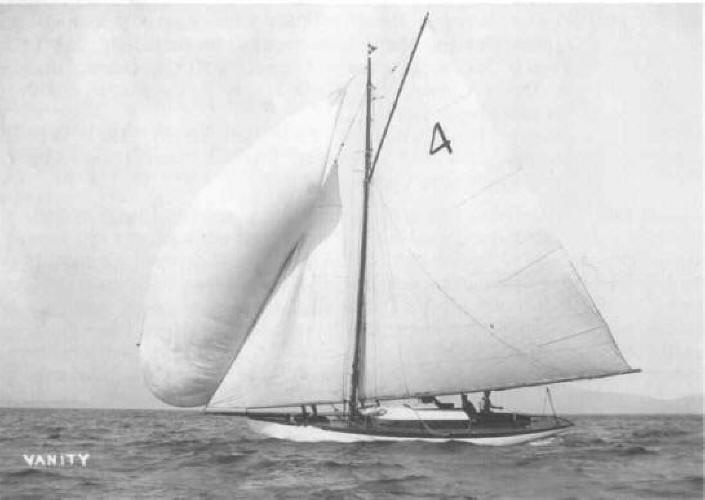

ca. 1925 (State Library of Tasmania) – judging by the sail number Vanity is on the left
